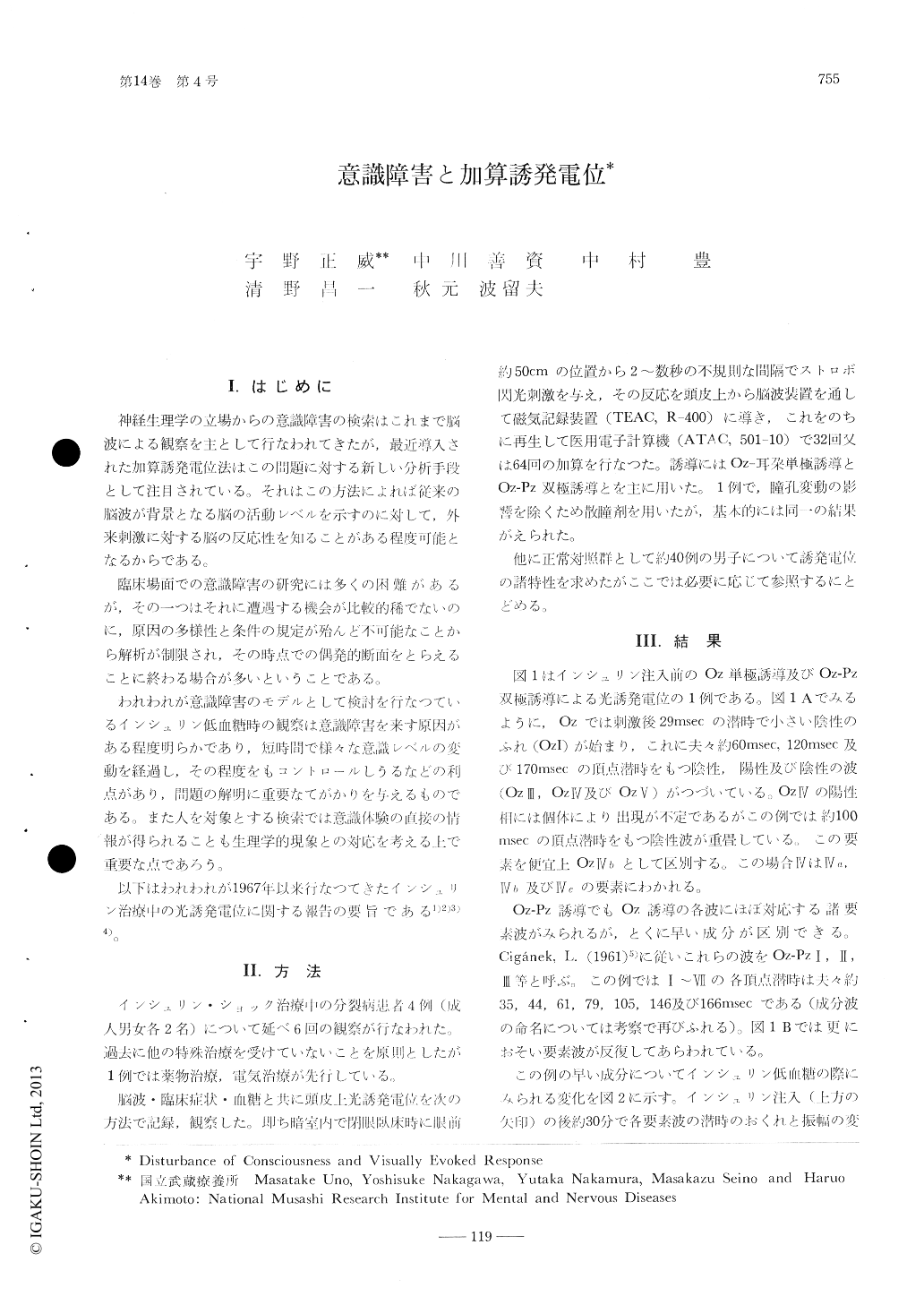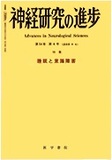Japanese
English
特集 睡眠と意識障害
意識障害と加算誘発電位
Disturbance of Consciousness and Visually Evoked Response
宇野 正威
1
,
中川 善資
1
,
中村 豊
1
,
清野 昌一
1
,
秋元 波留夫
1
Masatake Uno
1
,
Yoshisuke Nakazawa
1
,
Yutaka Nakamura
1
,
Masakazu Seino
1
,
Haruo Akimoto
1
1国立武蔵療養所
1National Musashi Research Institute for Mental and Nervous Diseases
pp.755-762
発行日 1971年4月30日
Published Date 1971/4/30
DOI https://doi.org/10.11477/mf.1431904677
- 有料閲覧
- Abstract 文献概要
- 1ページ目 Look Inside
意識障害のモデルとしてインシュリン低血糖の観察を行ない,脳波・臨床像・血糖と共に光刺激に対する加算誘発電位を検討した。Oz-耳朶単極及びOz-Pz双極の各誘導とも早い成分波(I〜III)はこれにつづくおそい成分に比し潜時,振幅の変化が少なく後者では一層著しい影響をうけて昏睡前期までに殆んど消失した。I〜IIIの早い成分は抵抗が強く昏睡期にも残存したが,潜時延長などの影響がみとめられた。インシュリン低血糖時の諸経過を自然唾眠や肝脳疾患その他の意識障害時の所見と対比してその異同及び機序について考察を行なつた。
Visually evoked potentials (VEP) were studied in 4 schizophrenic patients during the course of the insulin-hypoglycemia. This situation was favourable for analysing the cerebral responsiveness during consciousness disturbances, as the observation of various states of consciousness, from waking to deep coma, was able to be reproduced and the verbal information from the patients was available at the slightly disturbed state of consciousness.

Copyright © 1971, Igaku-Shoin Ltd. All rights reserved.


